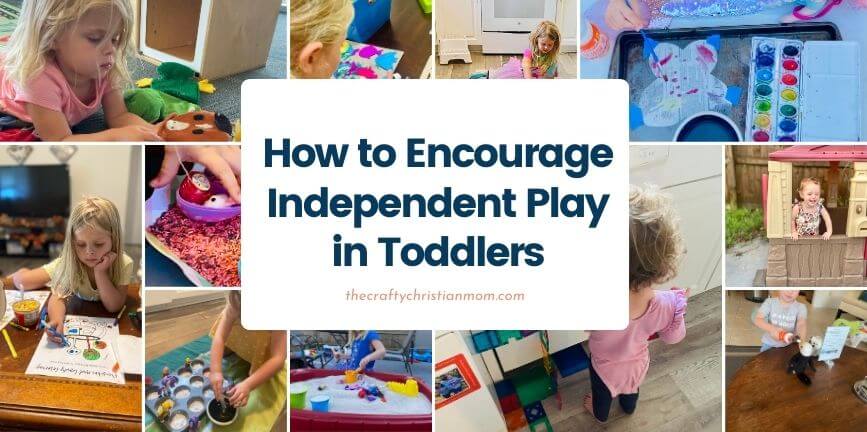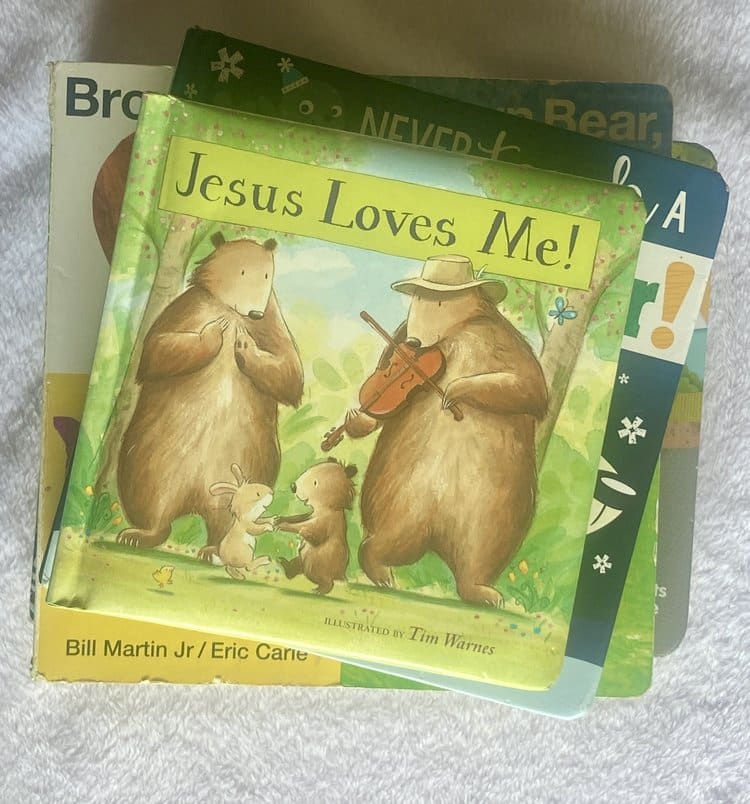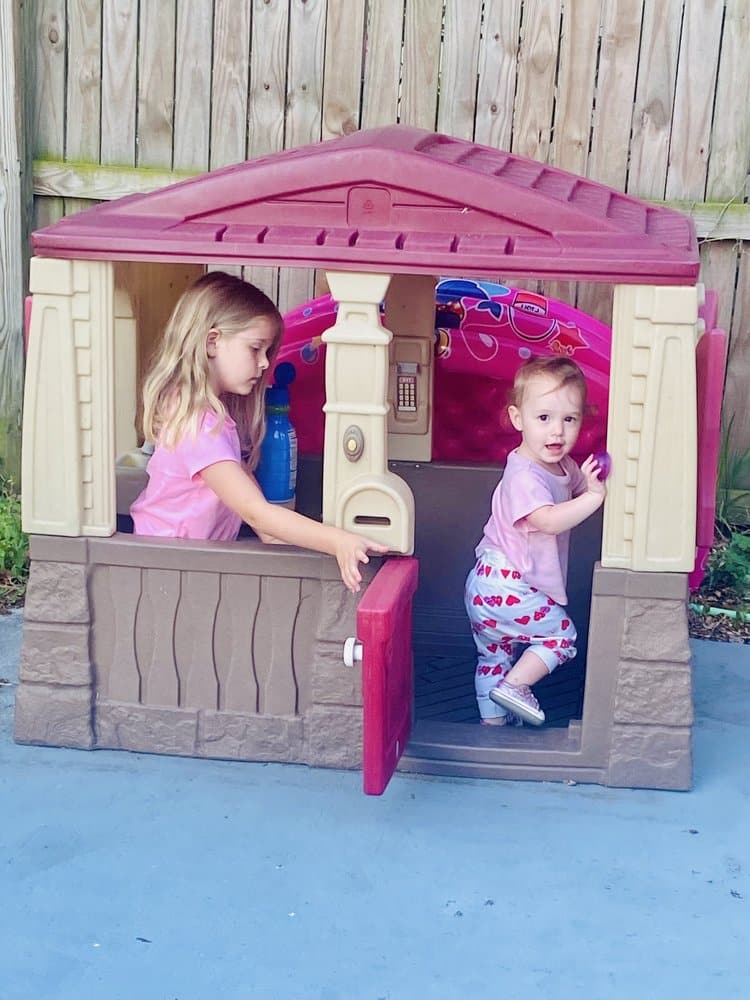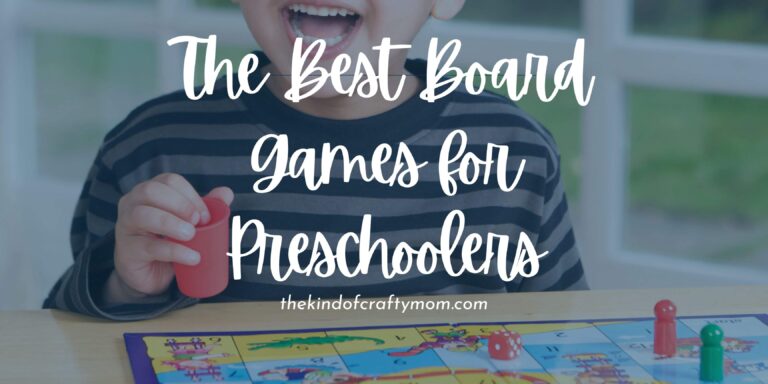How to Encourage Independent Play in Toddlers
You might already know that independent play is so important, for both children and their parents. It promotes creativity, focus, problem-solving, and important social skills… and let’s be real, we as parents are NOT meant to (or able to) play with our kids 24/7!
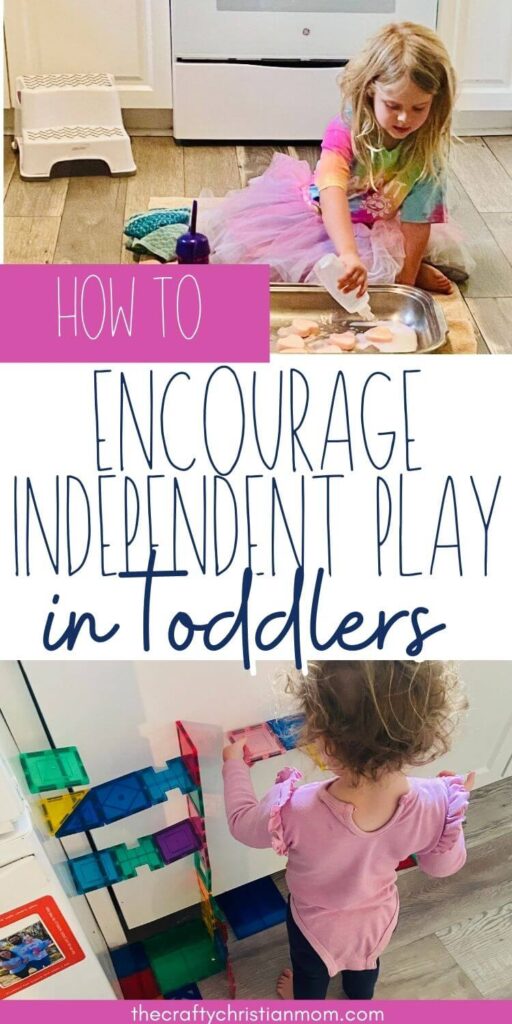
That being said, getting your child to play independently isn’t always as easy as it sounds. Independent play is a learned skill—most kids don’t automatically know how to (or want to) run off and play independently for hours.
But even if your little one clings to you like a monkey in a tree during playtime right now, there’s hope. I can’t promise it will be easy, but I can promise that you can teach your child skills to help them play more independently—and those skills will help them in so many other areas of their lives too.
Below are the four key tips that I’ve found to work well in teaching children to play independently. I’ll be honest: #3 isn’t all sunshine and roses. But if you stick with it and commit to trying these tips out, I know your little one will be playing independently in no time.
Discover What Kind of Play Your Child Loves
Think about the things that you enjoy doing. Maybe it’s drawing, running, building with your hands, working with numbers, crocheting, or playing basketball. If you’re someone who LOVES drawing and creating but HATES running… How would you feel if I told you that next Saturday, we’re going to spend the day training for a marathon?
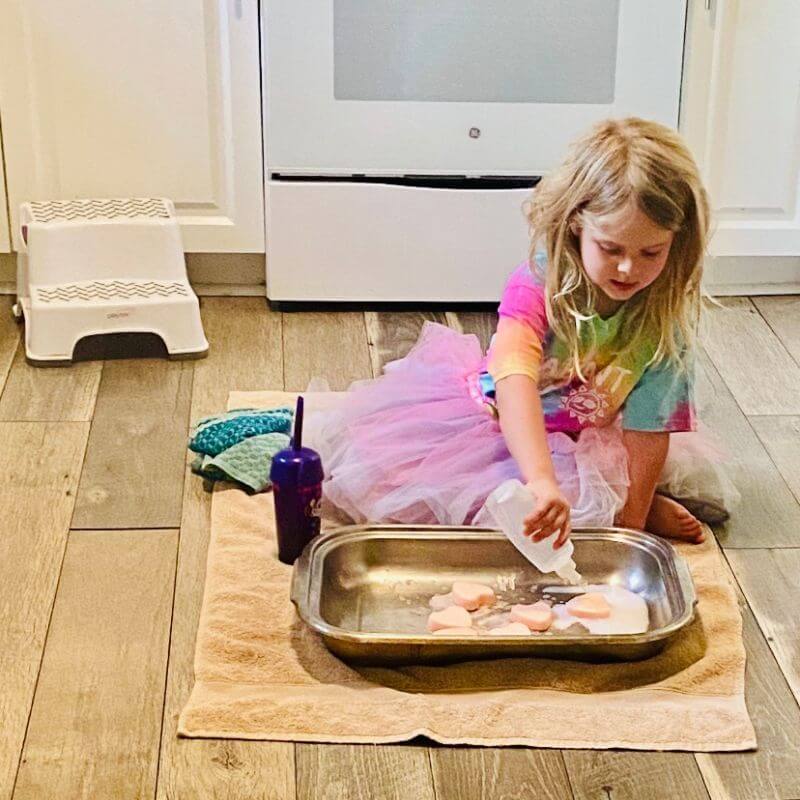
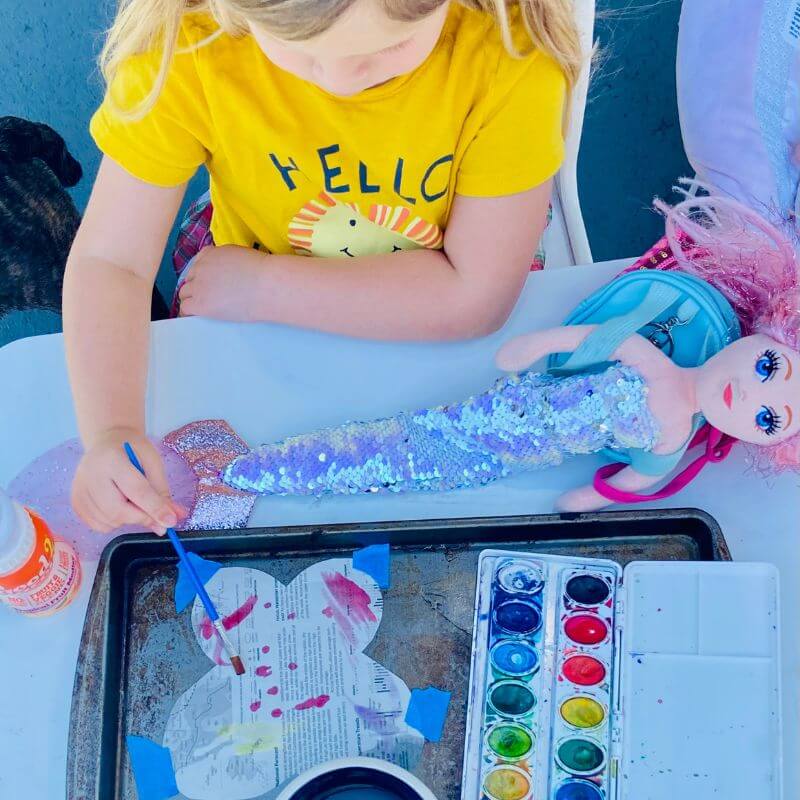
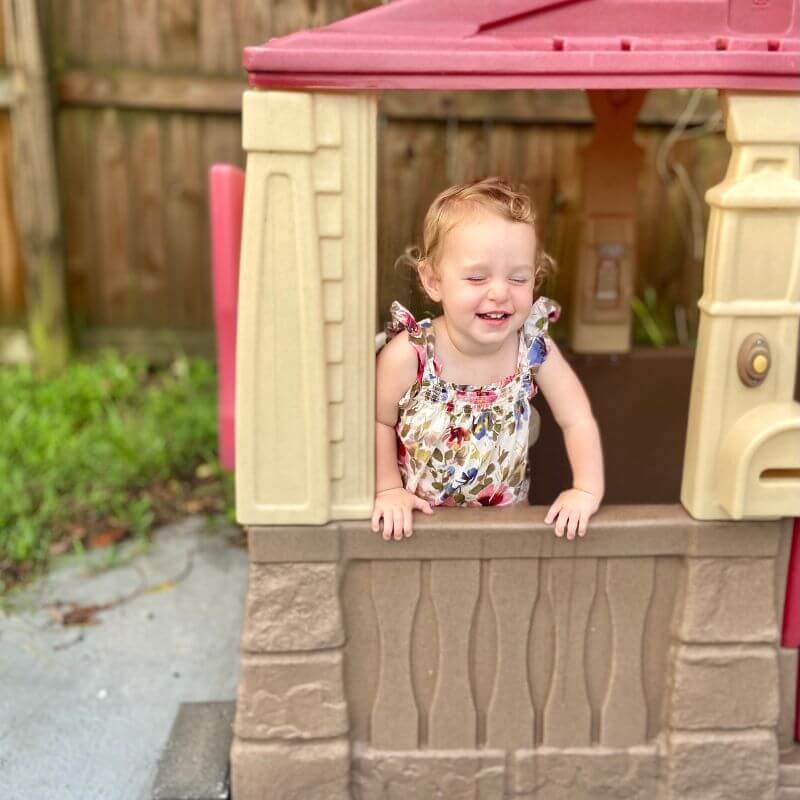
Just like adults, kids also have activities that they naturally gravitate towards. There are so many different kinds of play: pretend play, sensory play, building, drawing, physical play like climbing and dancing, and more.
Take some time to observe what kind of play your toddler enjoys, and support that kind of play!
This might sound obvious, but as parents, we often get it in our heads that play is supposed to look a certain way. If that’s you, it’s time to change your thinking!
Some toddlers dive into pretend play with dolls or costumes, but others enjoy the tactile joy of sensory bins like this garden-themed bin or a simple baking soda and vinegar fizz experiment. Others prefer building towers, drawing, or squishing cloud dough between their fingers, or even just lining up their toy cars. Even if your little one just wants to jump around and move, it all counts!
When you allow your little one to lean into the kind of play they enjoy, you’re a lot more likely to see success.
Be Consistent with Independent Play Time
It’s no secret that toddlers thrive on routine. Learning to play independently is no exception! Just like we build rhythms into family life—like praying during dinner or having a regular bedtime story—creating a set time each day for independent play helps it become a natural part of their day.
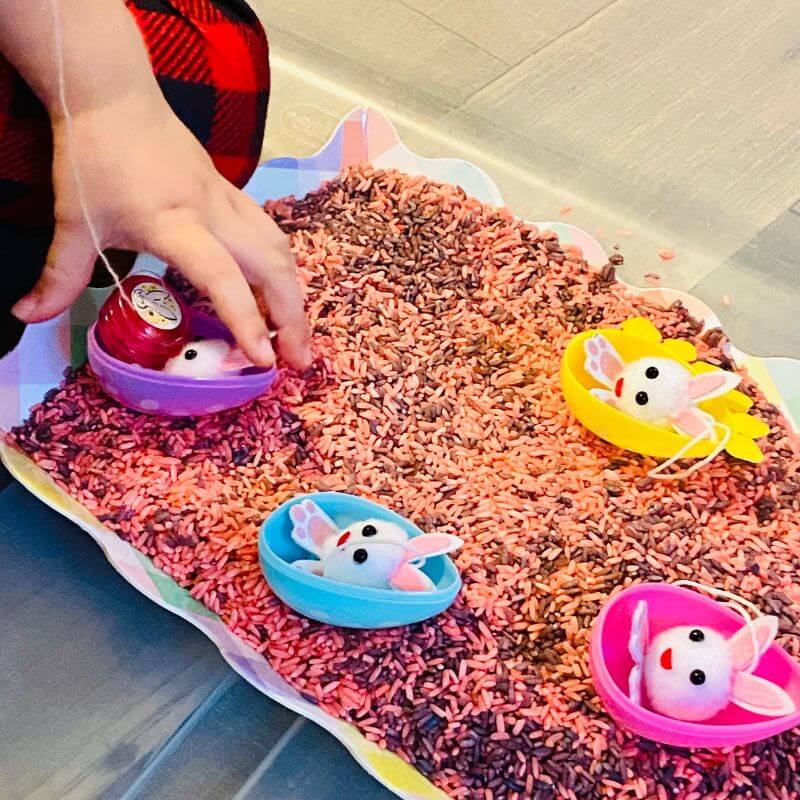
When my older daughter, Ella, was little, she really struggled with independent play. She became a toddler at the height of the pandemic, so she was VERY used to having Mommy and Daddy around all the time.
One thing that helped Ella a lot was having a routine “Ella Play Time” every day. Each morning, I would play with her for a set time, and then I’d give her warnings: “Okay, in about ten minutes, it will be Ella Play Time.”
Ella Play Time was her time to play independently. She could play however she wanted: with her dolls, drawing and coloring, or if she really wanted to, just laying around. Basically, if it didn’t require my help (and it was safe and something generally allowed in our house, of course), it was fair game.
Start small with this kind of routine. Set a timer for 5 or 10 minutes, and when the timer goes off, celebrate the heck out of your kiddo. THEY DID IT! They are learning to be a big, independent kid! YAY!
Set Boundaries (and Be Okay With the Pushback)
Okay, this is the part that’s not quite as fun. You’re leaning into the kind of play your little one enjoys, you’re creating set routines and times for independent play… and your little one is still not happy. Now what?
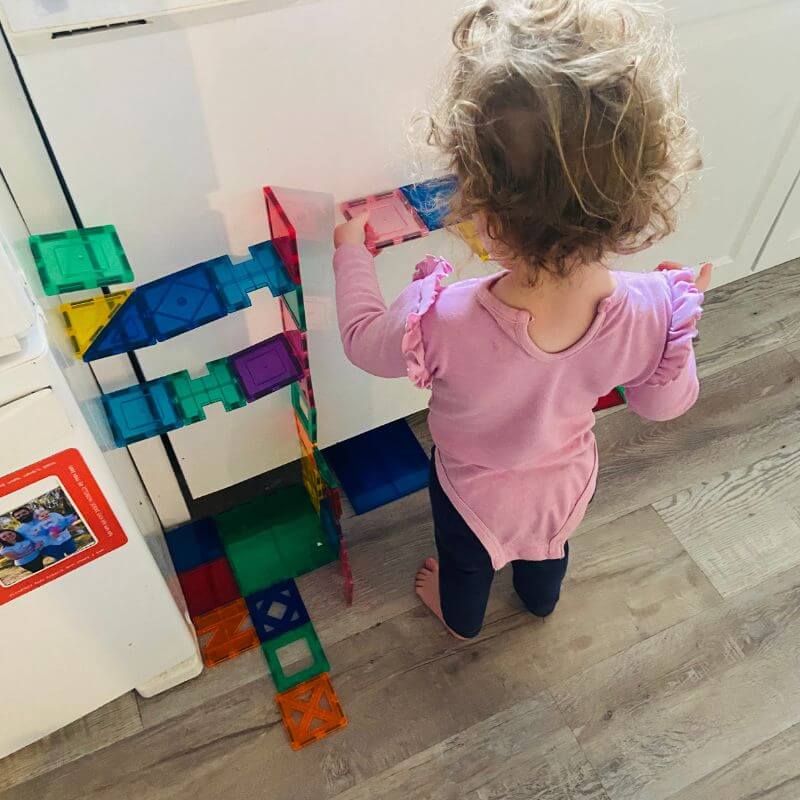
One of the not-so-fun, but inevitable, parts of parenting is that it’s your job to set boundaries, and your kiddo’s job to test and push back on those boundaries. Just like when you tell your toddler no ice cream before dinner and they cry and protest, you are setting a boundary that they probably won’t like, but that you KNOW is good for them.
So as you start implementing more independent playtime, don’t be shocked if your little one pouts and maybe even cries. When we did “Ella Play Time”, some days Ella would spend the majority of the time pouting and complaining. While that certainly wasn’t what I was hoping for, I didn’t give up. 90% of the time, before the end of “Ella Play Time,” she would find something to do… and when you suddenly realize they’ve started playing, that’s when the magic happens.
(And yes, that means 10% of the time, she DIDN’T play. There were days where she would spend the whole time pouting, and then eventually, it was time for me to say, “Yay! You did it! You made it through Ella Play Time!” But just know that if you stick to your routine, that won’t be the majority of days.)
Don’t Interrupt When They’re in the Zone
As adults, when we’re focused on something, we don’t exactly like being interrupted. Think about a time when you were “in the zone” and an interruption totally threw you off your game. Toddlers are no different!
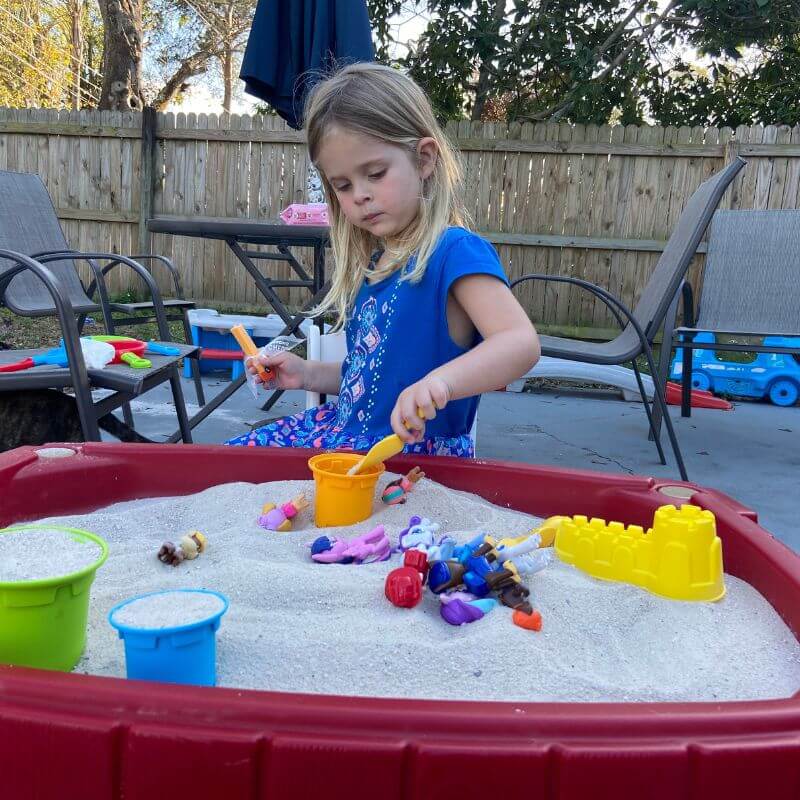
Once your little one settles into independent play, it can be SO tempting to jump in with a comment like, “Wow! That’s a tall tower!” or “What are you making?” But as hard as it is, try to resist the urge.
When a child is deeply engaged in play, they’re focused, curious, and using their imagination or problem-solving skills. Interrupting—even with good intentions—can break that concentration and pull them out of their creative flow.
Instead, observe quietly from a distance. Watch how they experiment, explore, and invent. It’s truly amazing what toddlers can do when we give them the space and trust to lead their own play.
When Ella plays independently (or when she was a bit younger, at least), I would say it was like watching a baby deer. No sudden movements or you’ll spook them! And if I broke her concentration, there was a BIG chance she was going to say, “Come play with me, Mommy!”
And don’t worry—you’ll have plenty of time to connect later. Once your child naturally winds down, that’s a great moment to say something like, “I noticed you worked so hard on that!” or “Tell me about what you made!” I LOVE surprising my girls by pointing out the things I noticed when they didn’t even know I was paying attention!
By the way, now that Ella is a bit older, independent playtime isn’t (usually) such a struggle. At 6 years old, I no longer have to set a timer or “force” her into independent play. But it took years to strengthen her independent play muscles. So don’t give up!
Conclusion
Independent play is a gift—for your child and for you. It builds confidence, creativity, and problem-solving skills in toddlers, while giving you a moment to breathe, reset, or get something done. Just remember: it’s not about doing it perfectly, but about creating space and consistency for your child to grow into it over time.
Start by tuning into what kind of play they love, set a daily rhythm, hold your boundaries with confidence (even through the pushback!), and protect those golden moments when they’re in the zone.
You’ve got this, mama.
What kind of play does your toddler love most right now? I’d love to hear about it in the comments—or tag me on Instagram if you try out any of these tips!

